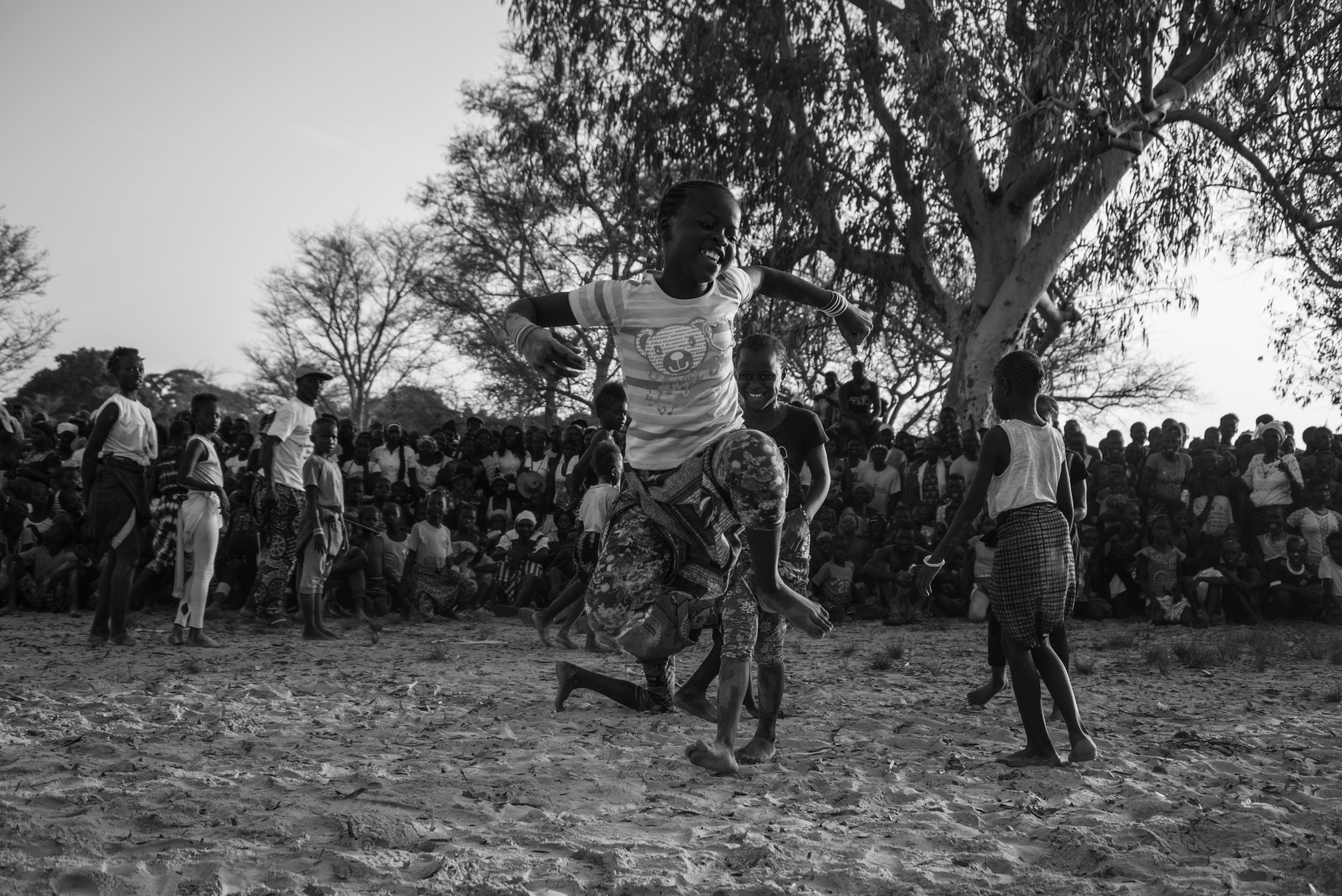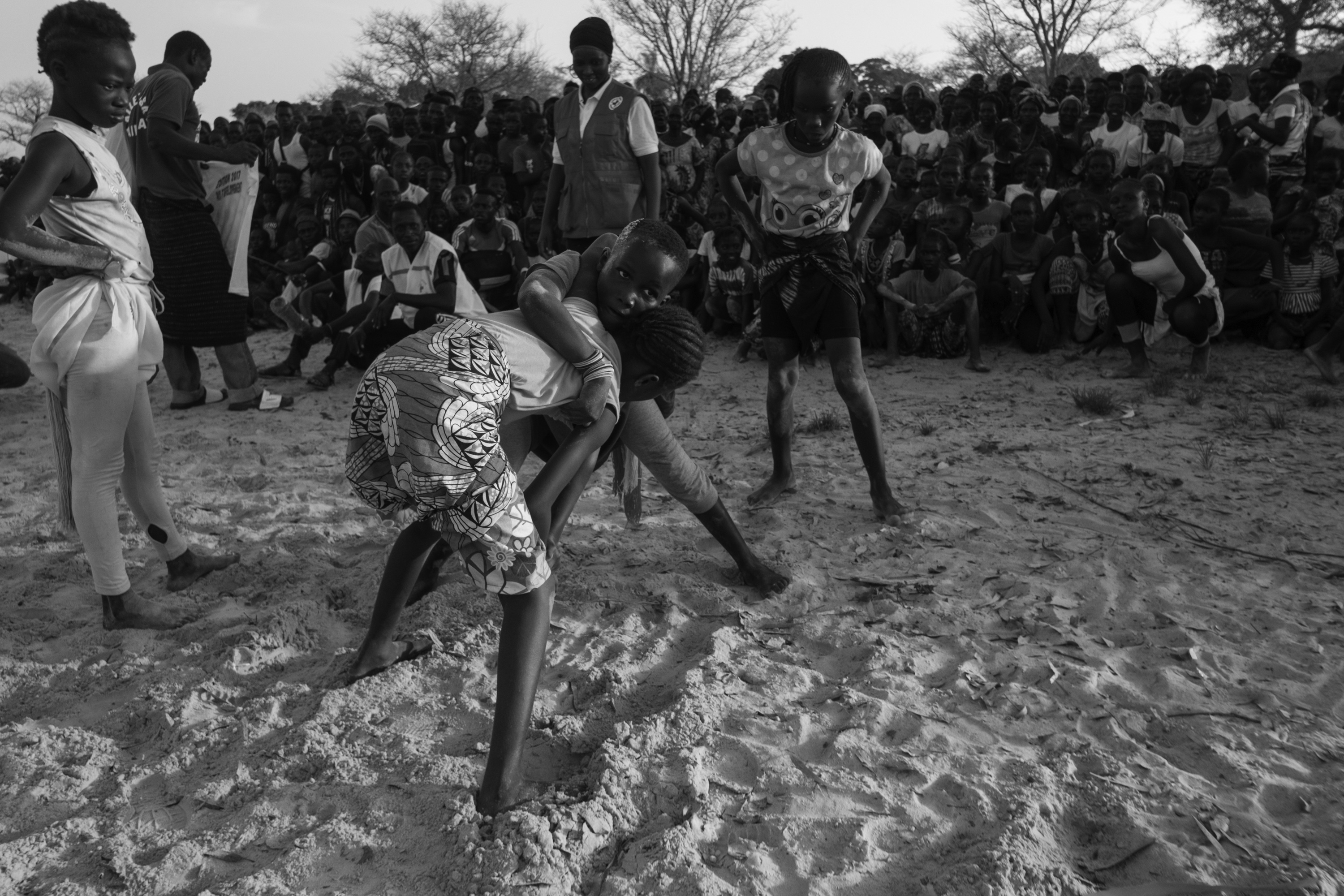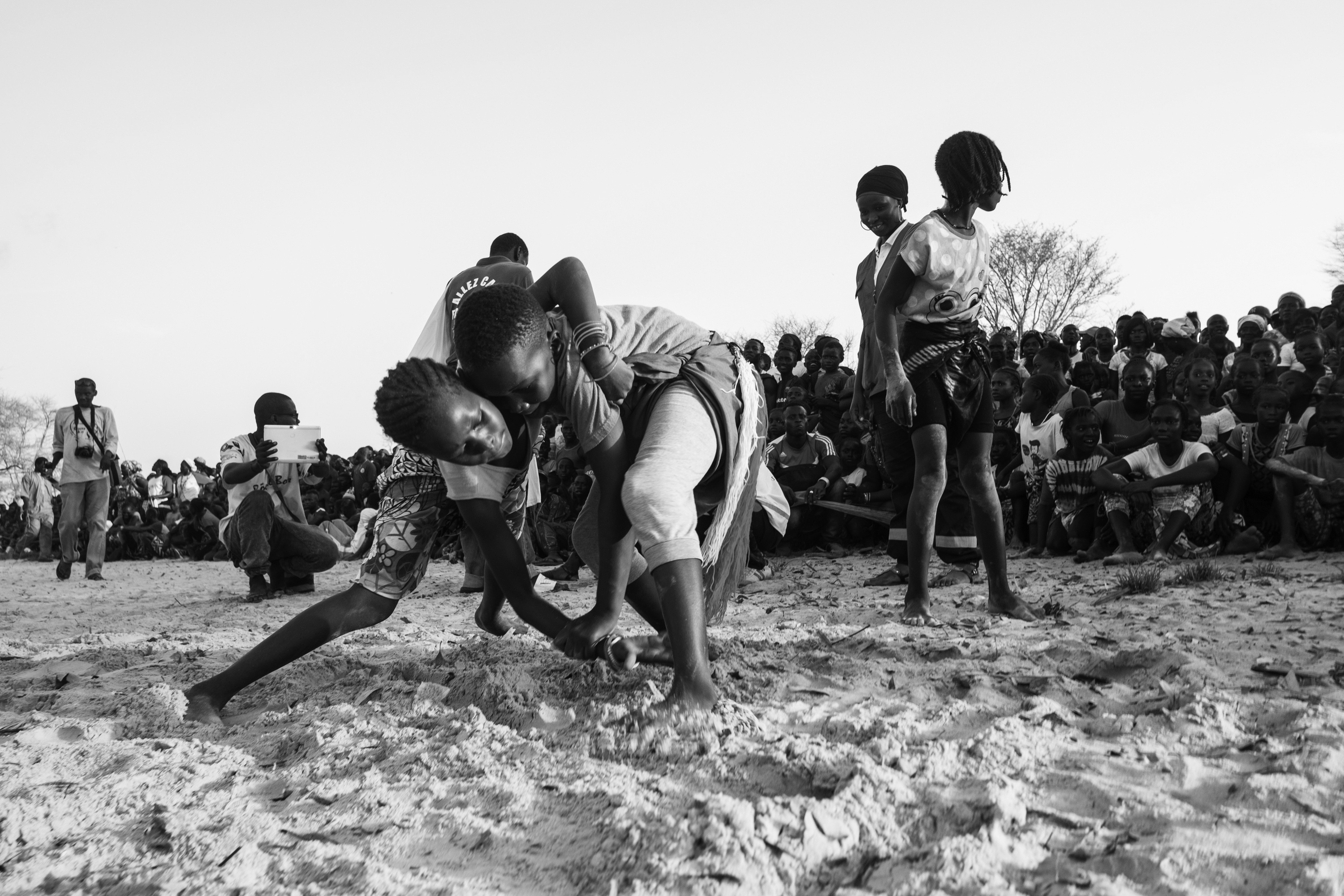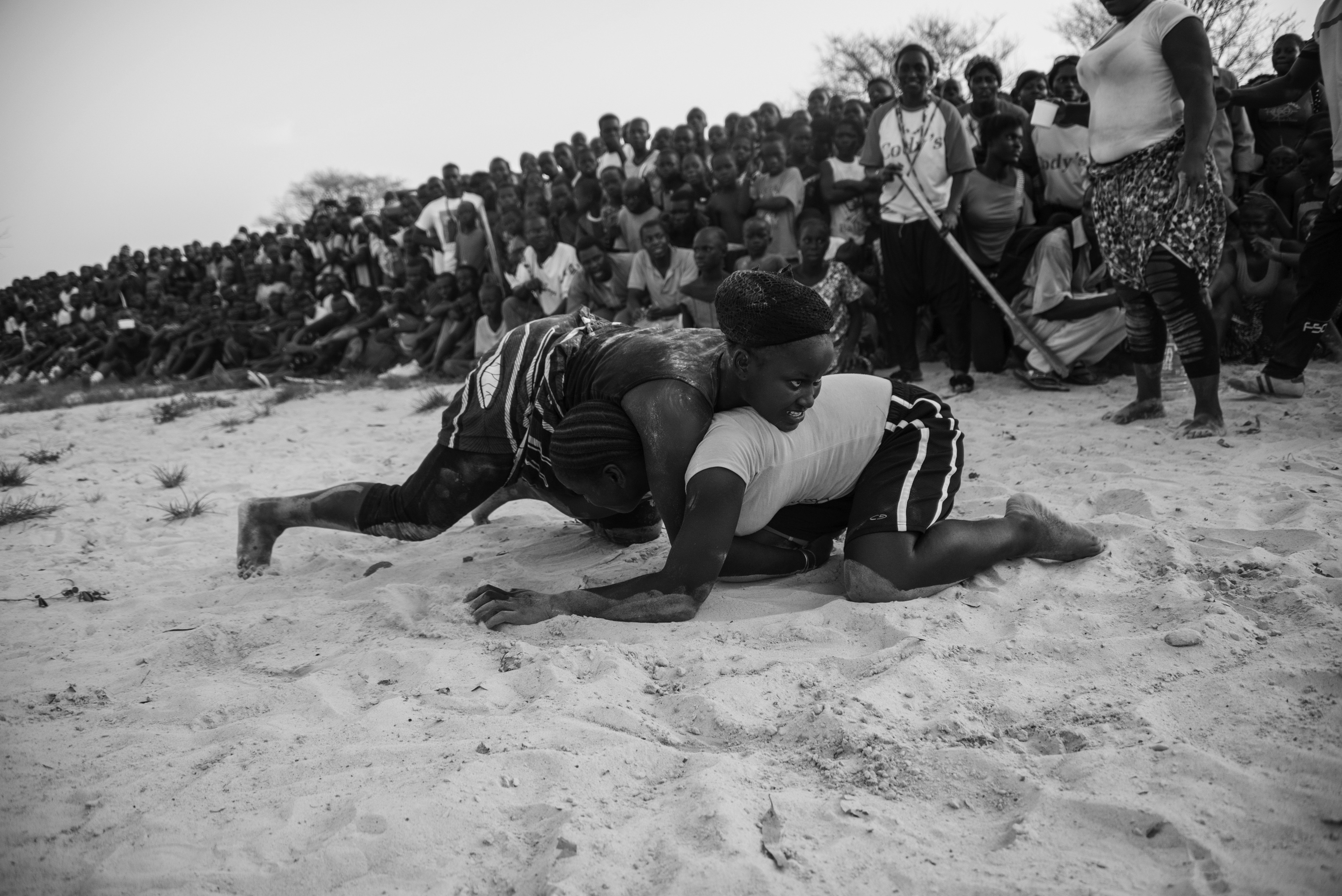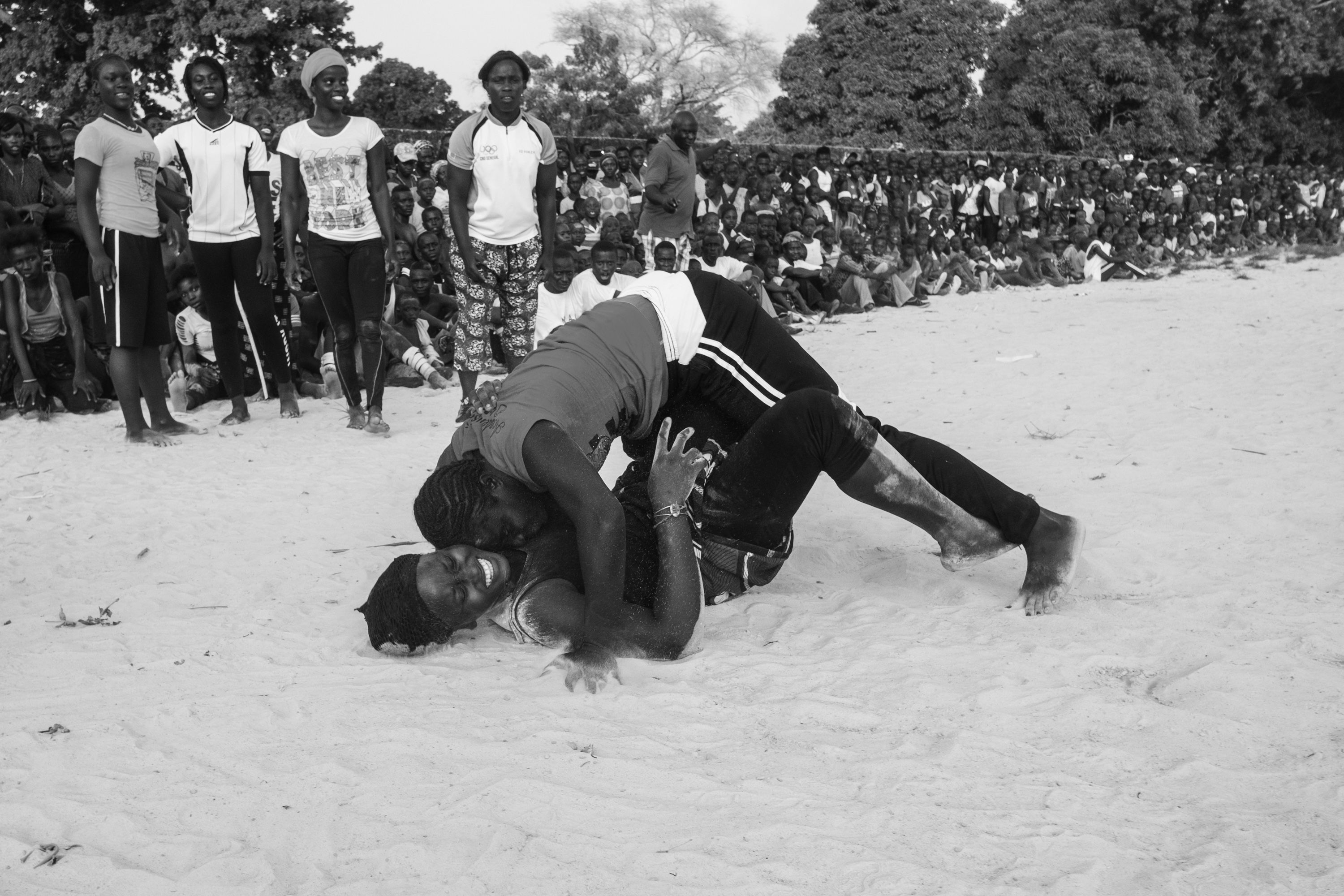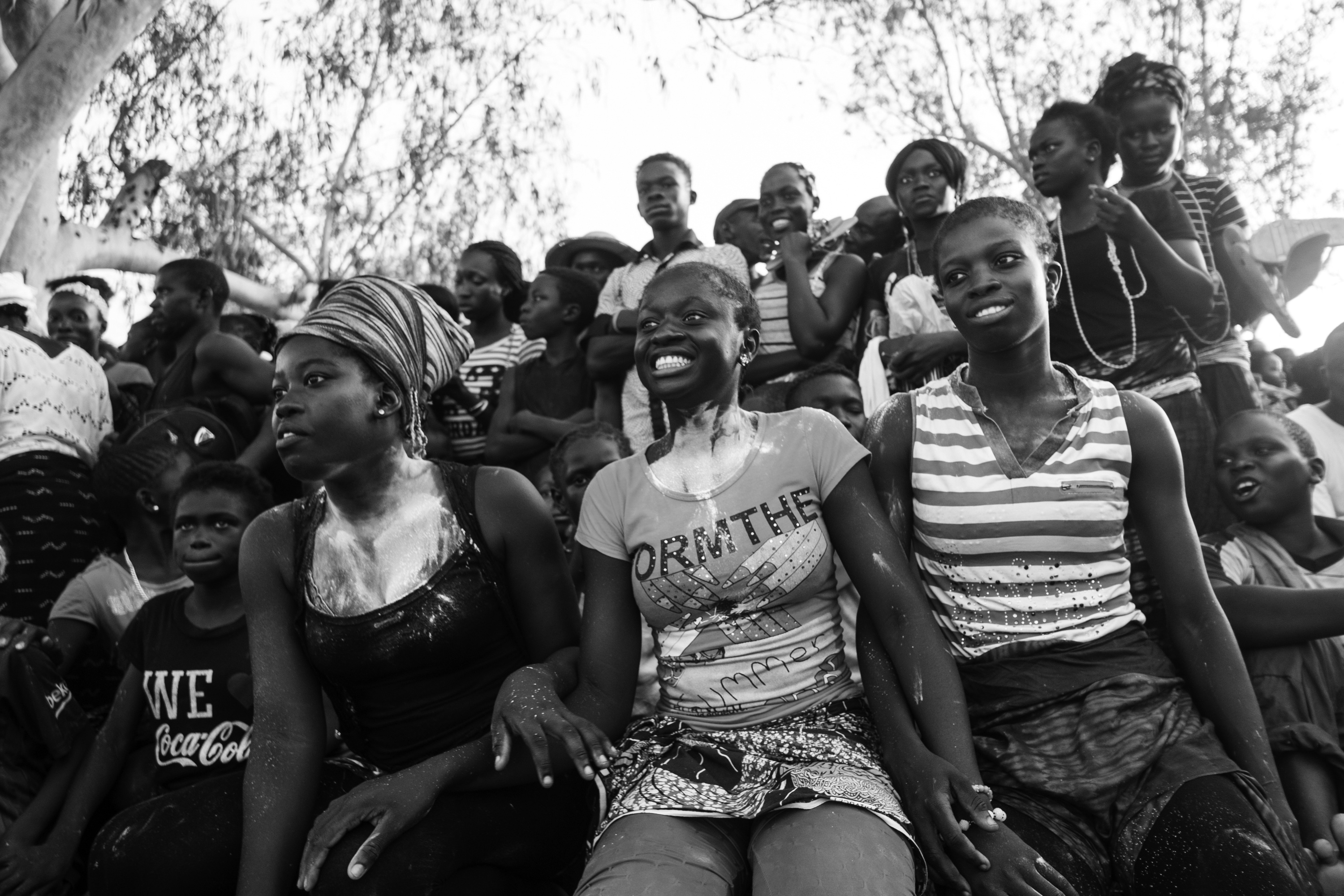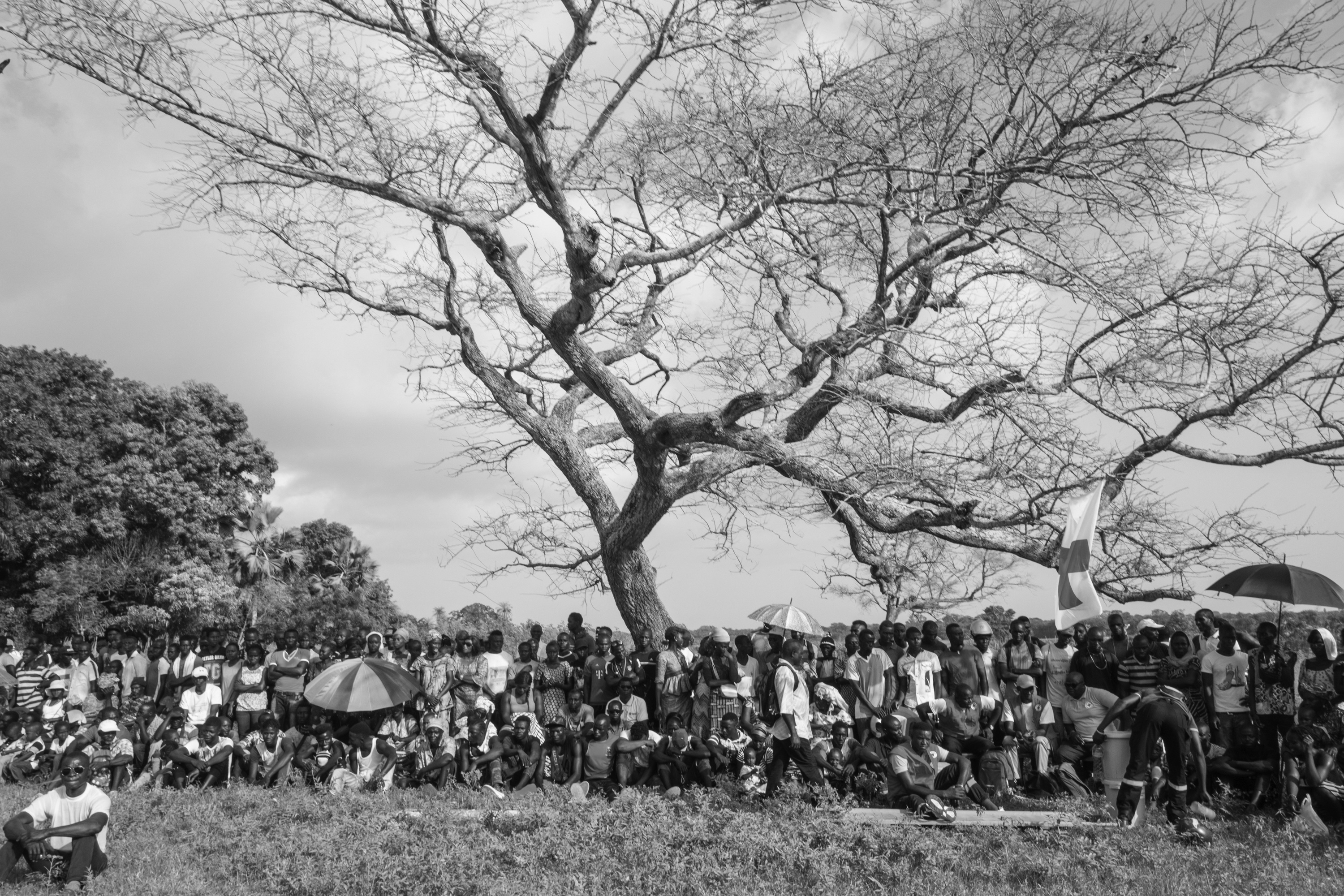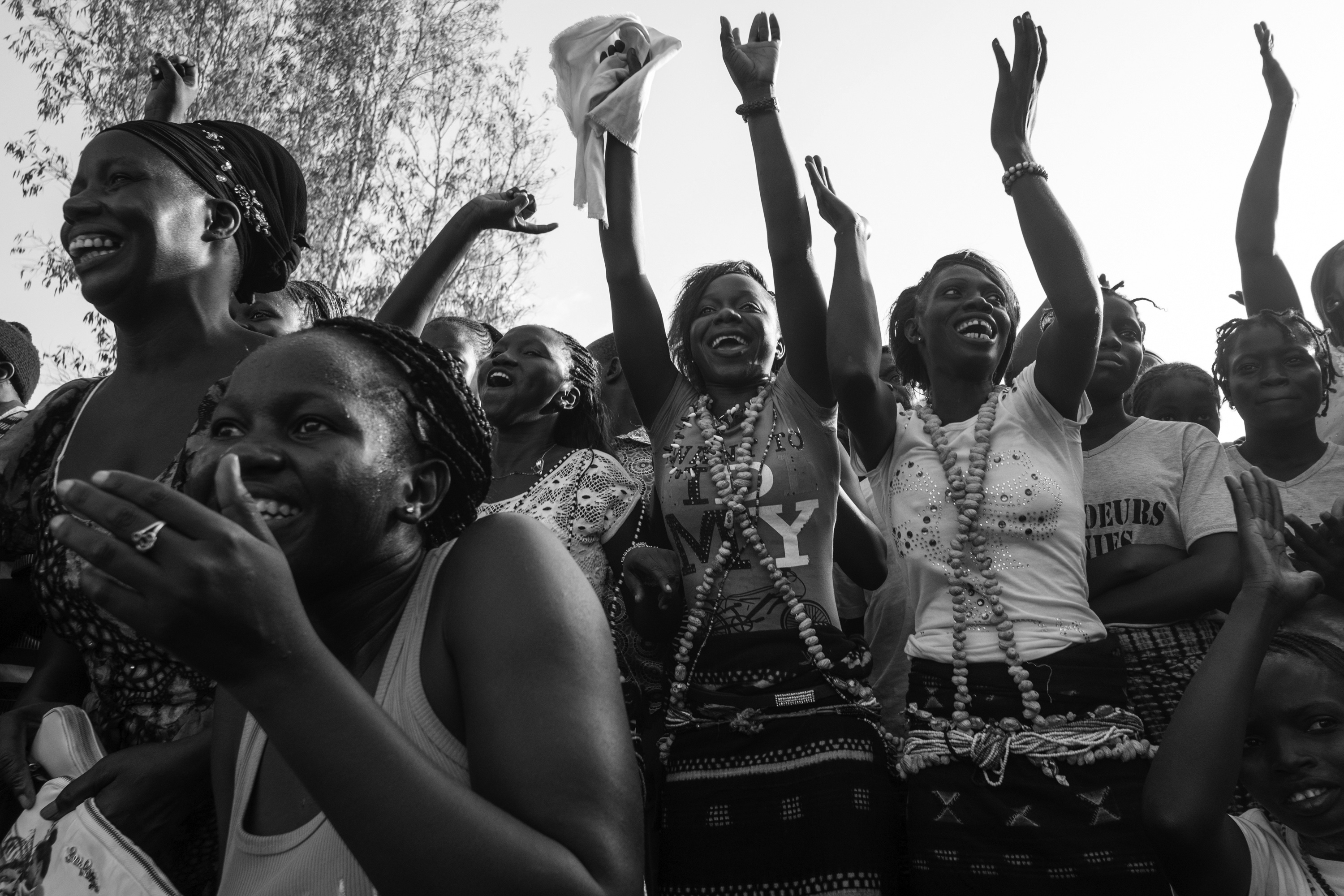At the Festival of the King of Oussouye, girls and young women participate in traditional wrestling alongside the men. The area, in Senegal’s southern Casamance region, is home to most of the country’s female wrestlers. Almost every year, coaches from the Senegal Women’s National Wrestling Team – who compete in the African Championships and Olympics when they qualify – come to the festival to scout new talent. The festival features traditional Senegalese wrestling known as laamb, which differs in style and rules from freestyle, Greco-Roman wrestling that is practised at the international level. However, according to Senegal Men’s Wrestling Head Coach, Lansana Coly, the strength and skills of the two are similar enough. Coly is from the Casamance region, and he launched the women’s team 20 years ago with three wrestlers, whom he recruited at the 1996 Festival of the King of Oussouye.
Today, according to many of the girls in the Oussouye area, female wrestling has lost its popularity due to some young women in the area no longer viewing it as feminine. For centuries the sport has been used as a way for women from the Jola group to display their womanhood among one another. Black and indigo blue are the traditional colours to wear if you are going to wrestle, though people also wear other colours these days. Girls and young women often wear beads to dance and support the male wrestlers, before removing the decorations to then wrestle themselves.
In September 2017, the men and boys at the festival wrestled for two days before they cleared away the giant circle in an open green field. That was the signal it was time for the women to join in the fun.
